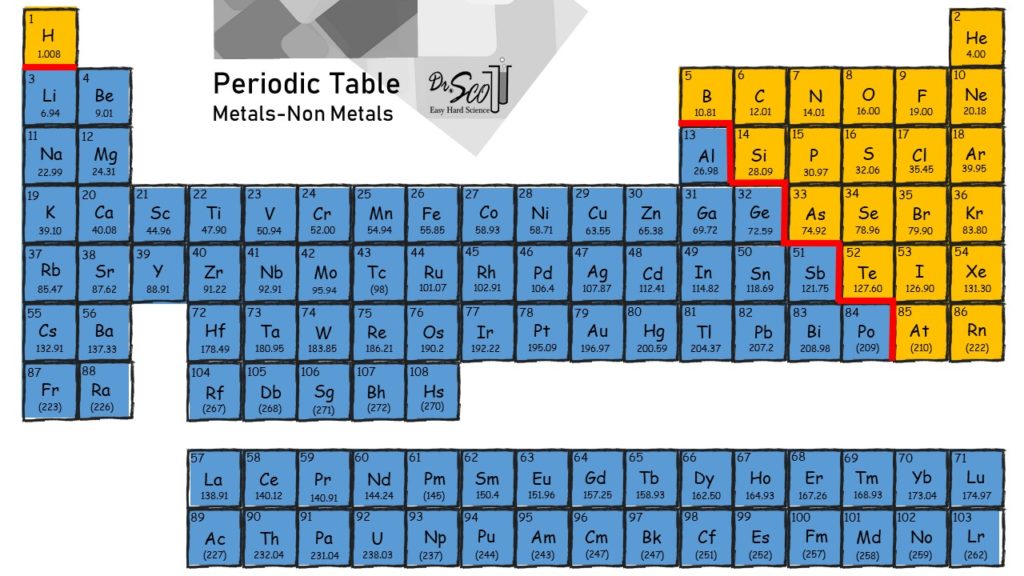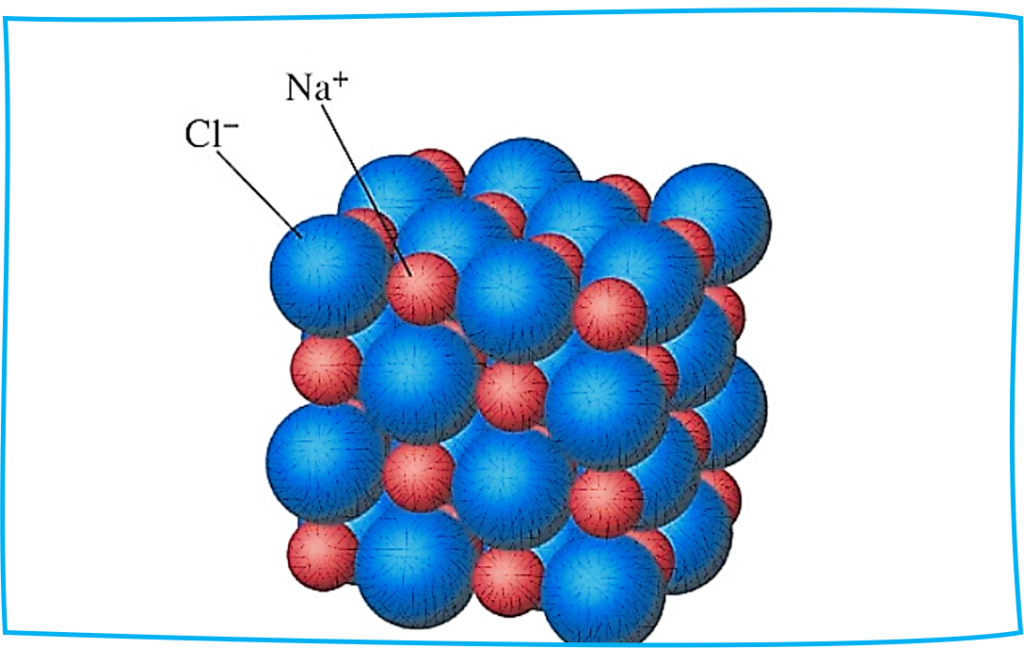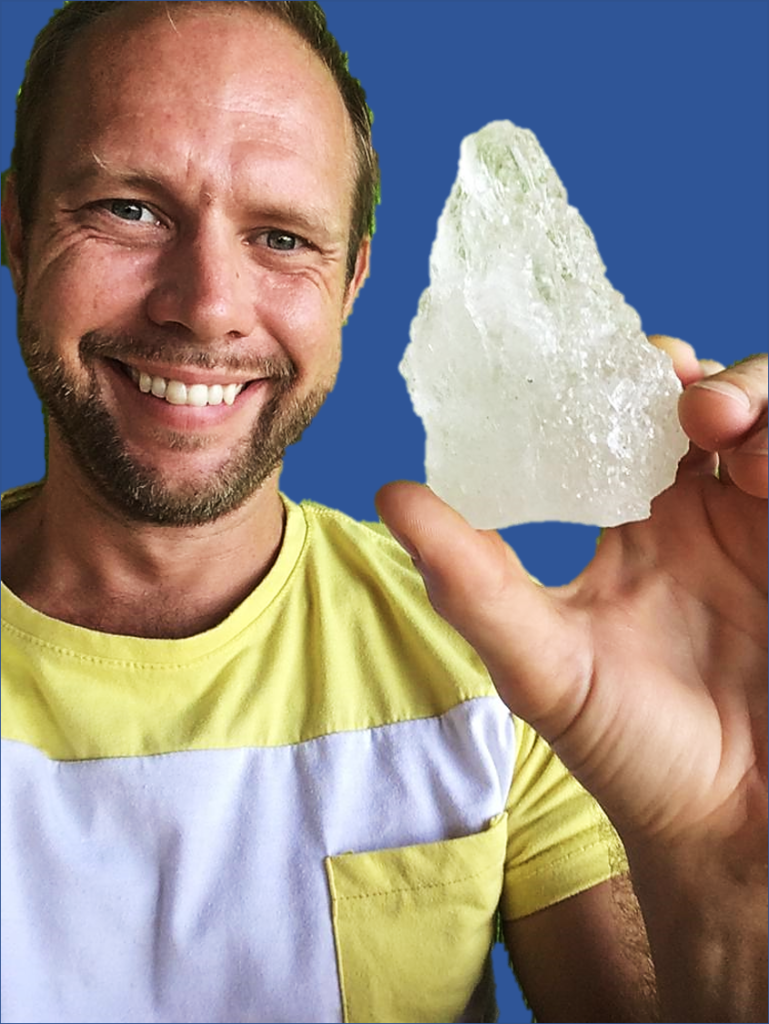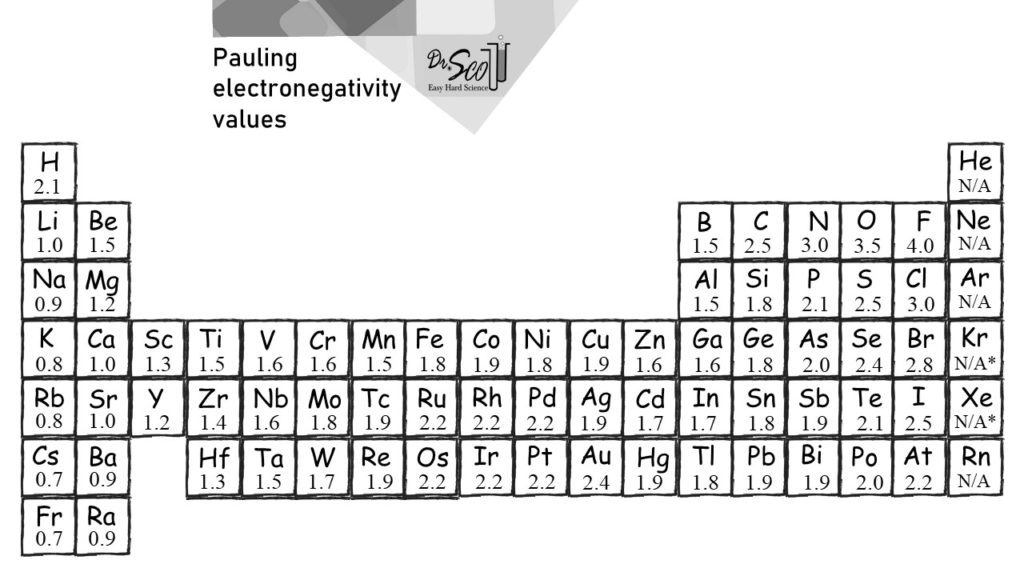Ionic Bond Definition
Ionic Bond Definition
One ionic bond definition is that atoms are held together by charge. Plus sticking to minus. Charged atoms are called ions, and they can clump like a pile of magnets locked together. The charged atoms clump together in a very specific geometric pattern that we often call a crystal structure. Like salt.
Simple Ionic Bond Definition
The easiest and most straightforward ionic bond definition is that there are both metal and nonmetal elements in the substance. Basically, if a substance contains both metal and nonmetals elements, it’s probably an ionic compound held together by ionic bonds. The periodic table below shows the metal elements in blue and nonmetal elements in gold.

Formal Ionic Bond Definition
A more formal ionic bond definition is that there is a big difference in electronegativity between the atoms in a compound. Electronegativity is shown in the below table. It’s a number that ranges from 0 to 4. Atoms with a relatively high electronegativity tend to become negative. Atoms with the relatively low electronegativity tend to become positive. Specifically, “they” say that if the difference in electronegativity is more than two units, an ionic bond will form.
Ionic Bond Examples
NaCl

The NaCl bond type is ionic, because it contains a metal and nonmetal. A good real-world example is a crystal of salt on the dinner table. Hopefully you understand that this salt crystal, even though tiny, has way more than just a single Na+ and a single Cl-. There are many, many interlocked Na+ and Cl- arranged in an alternating pattern. We call this grid a lattice, or crystal structure. In the figure below, note that any particular Na+ is not bonded to any particular Cl-. There is a vast network of ionic bonds holding the substance together. It would be extremely uncommon to talk about any one particular ionic bond between one particular Na+ and one particular Cl-. The idea is moreso that all these forces of attraction result in interlocking.
The best evidence of ionic bonds would be the alternating plus-minus crystal structure the atoms. It’s so plain and obvious in the above image. The above image is, however, essentially a cartoon. It’s not generally possible take a picture of atoms and see the alternating plus-minus charge.
Alum


